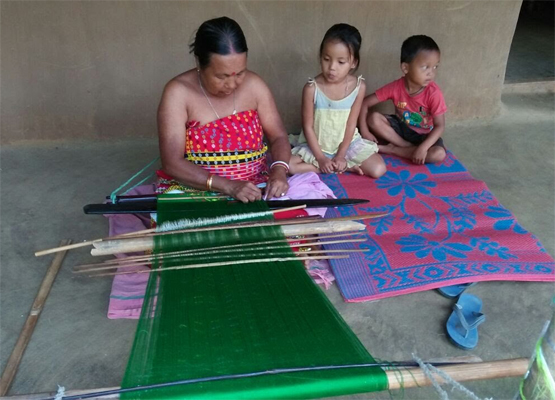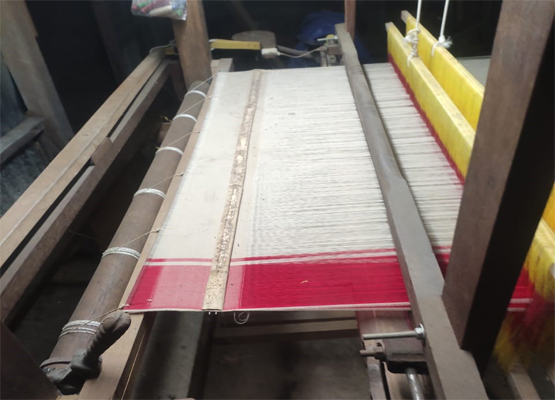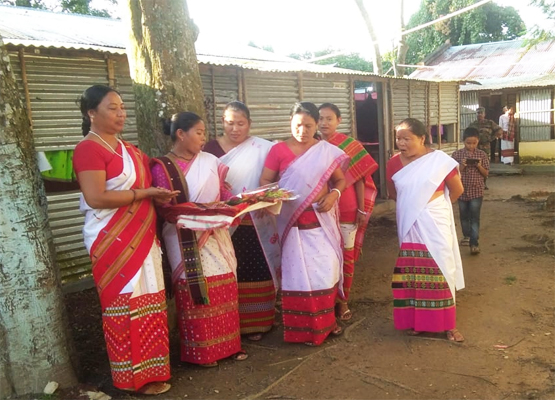
The state of Tripura is known for its distinctive and colourful attires made with unique handwoven fabrics. Many of the clothing is similar to that of the other north-eastern states, but the designs and patterns being stitched and woven here are markedly different. Tripura is a majorly hilly state surrounded by breathtaking natural beauty. Enclosed by mountains and lush valleys, the weavers take inspiration from their surroundings and produce fabrics and garments that reflect their state, tribes and tribal culture.
Weaving is done mainly on the loin loom or backstrap loom. These looms are extremely easy to operate, cheap and simple. They can be carried around and shifted easily as they do not contain any heavy frames or permanent fixtures. As they are so flexible, these looms offer a wide scope for various designs and patterns. The handloom and textile industry plays a vital role in the state’s economy and provides a secondary means of income and employment to the indigenous folk of the state. The main handloom items made for commercial use are the lasingphee - which is a quilt-like sheet used to keep warm during winters, cotton sarees, shoulder bags, bedspreads and scarves. Articles like cushion covers and table mats are also made from handwoven tribal fabrics.


As the loin loom is extremely simple, it needs minimal raw materials to get started. The tools and materials needed for weaving are the tension loom, bow, spinning machine, spindle and cotton yarn. The weaving is mostly done with cotton, acrylic and rarely, silk. The yarn is mostly sourced from the southern states, Assam or West Bengal. Cotton yarn was the one used for ages. The cotton was cultivated, spun by hand and dyed using natural tints by the weavers themselves. But nowadays, the weavers have slowly substituted cotton for acrylic. This is mainly due to the non-availability of good-quality cotton. But the durability of acrylic and the fact that it holds colour and dye even after numerous washes have made it the preferred yarn for weaving. Weaving with silk is done only for garments that are worn on special occasions and it is generally more expensive than other yarns.

